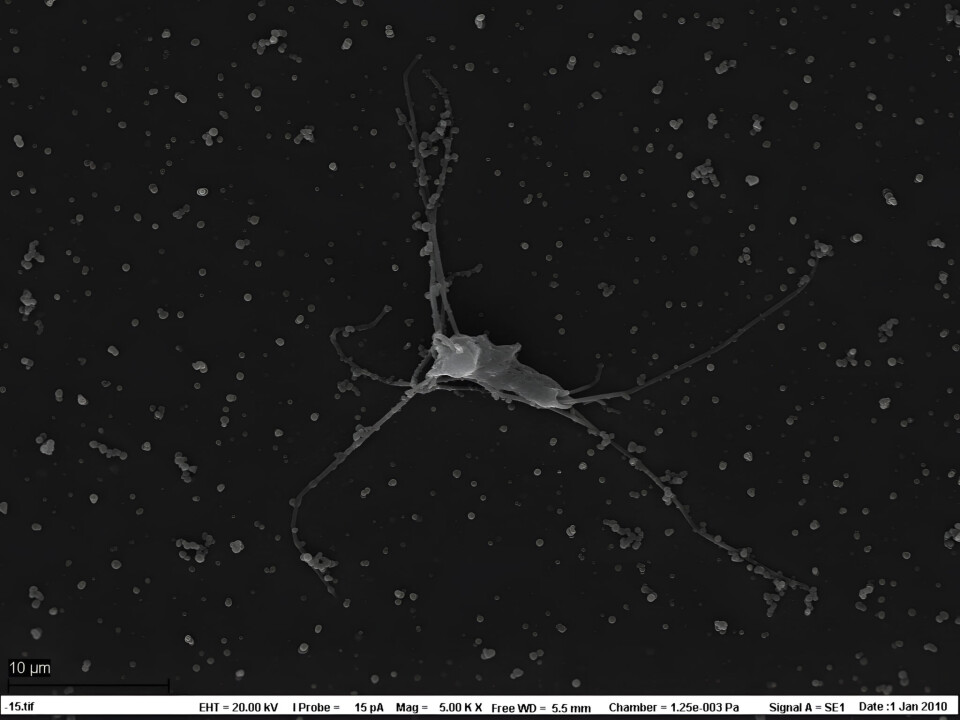
New tool against dangerous salmon parasite
UV treatment proves to be an effective method for combating the parasite Spironucleus salmonicida in hatcheries. This is good news for players in the aquaculture industry who have long struggled with the parasite.
Spironucleus salmonicida is a single-celled parasite that can cause disease in farmed salmon at sea.
It is believed that the fish is first infected in freshwater, and the parasite has been difficult to eliminate in hatcheries. Now, new research shows that the correct use of UV light can effectively kill the rare but harmful parasite, Norwegian research institute Nofima writes in a press release.
Two types of UV technology tested
The researchers tested two different types of UV lamps in a controlled laboratory experiment: low-pressure and medium-pressure lamps. The parasite was exposed to several different UV doses, and survival after treatment was examined.
The results showed that medium-pressure lamps were significantly more effective than low-pressure lamps and at lower doses.
"With medium-pressure lamps, we saw no surviving parasites at a dose of 50 MJ/cm² (millijoules per square centimetre) or higher," says research director Lill-Heidi Johansen at Nofima.
Even at lower doses of 10 and 25 MJ/cm², the parasites were so weakened that they died within 48 hours.
A clear recommendation

Based on the findings, the researchers recommend a dose of at least 50 MJ/cm² when using medium-pressure UV lamps in hatcheries.
"But the dose should be adjusted according to water quality. For example, more organic material in the water can reduce the effect of the UV treatment," Johansen points out.
The findings are important for the aquaculture industry. Effective control of Spironucleus salmonicida can lead to healthier fish and better production.
"This gives us a new tool in the fight against this troublesome parasite," says Johansen.


The parasite Spironucleus salmonicida seen through electron microscopy. Photo: Nofima
The way forward
The researchers are now starting fish trials where they will conduct an infection with the parasite Spironucleus salmonicida in RAS facilities at the Fish Health Laboratory at the Aquaculture Station in Tromsø.
In the experiment, the UV dose (50 MJ/cm²) found to be effective in killing the parasite in initial trials will be tested. They will also investigate the effect of ozone treatment.

In the experiment, the researchers will also examine where in the RAS system the parasite is located. Senior researcher Carlo Lazado, who is responsible for the upcoming experiment, looks forward to an exciting trial.
"It is very important to know where the parasite is located in the RAS system to develop the best possible disinfection strategies in the future," he concludes.
Facts about UV dose and the experiment:
- Water is disinfected with UV lamps that emit ultraviolet light, which disrupts the genetic material in harmful microorganisms. Light intensity is measured in millijoules per square centimetre (MJ/cm²). A higher dose is necessary for more resistant organisms.
- In the experiment, the researchers used two UV lamps, low pressure and medium pressure. Various doses were tested to find which dose leads to a 99.9% reduction of the parasite Spironucleus salmonicida.
- The researchers found that even low doses of UV light (10-25 MJ/cm²) with medium pressure lamps were enough to weaken the parasites so much that they died within 48 hours. This is good news because it means we can use less energy while still achieving good effect.
- The research project is funded by FHF and led by the Institute of Marine Research.
(FHF project no. 901831: Spironucleus salmonicida-infections and spironucleus in Norwegian aquaculture: Transmission routes, host spectrum, and prevention (SpiroFri))





















